What is a Cigar Wrapper?
We’ve all got varying degrees of knowledge when it comes to cigar construction and anatomy. Let’s face it—There is A LOT to know about cigars. If you’re a true aficionado, you never stop learning. Most of us know that cigar wrapper or capa is the leaf material that surrounds the rest of the cigar. Many people know that the cigar wrapper has profound influence over the flavor and character of a cigar too. Once you get past that though, the amount of knowledge cigar smokers have varies pretty wildly. Smoke Inn always has your back in your cigar exploration and part of that is knowing your wrappers. Here’s what you should know about cigar wrappers to raise your game a level.
How Do I Recognize a “Good” Cigar Wrapper?
The leaves used for the cigar wrapper are meant to be the most flawless in appearance. Take a look at a premium cigar wrapper. You won’t notice pronounced veins in the leaf. The color should be very even and free of marks or blemishes. The texture smooth to the touch. After that most of it comes down to personal preferences. It’s a good idea to make notes on the types of cigars and wrappers than you enjoy. The wrapper may be responsible for anywhere from 60-90% of a cigars flavor. So the next time you enjoy a particularly delicious stick, make a note of the wrapper. Do a little research and see what you can learn about it. There’s obviously more to a great cigar than the wrapper, but the wrapper is often like the lynchpin that ties it all together in terms of flavor and character.
Cigar Wrapper Categories
The two fundamental cigar wrapper categories are Natural and Maduro, but as you’ll see there’s a whole lot more going on. Wrapper leaves are often sourced from the bottom of the plant because these are the largest, thinnest leaves. But Maduro wrappers most often come from the top leaves. Maduros are your darker colored cigar wrappers. That’s the easiest way to tell them natural wrappers on sight alone, but that’s just the beginning.
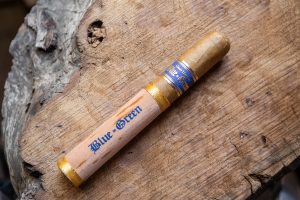
Natural Cigars
Natural wrappers are generally made from the broader, thinner leaves lower on the plant and are shaded with cheesecloth in the process to protect them from direct sunlight. A natural wrapper is made from matured tobacco, but it does not undergo the additional fermentation of the Maduro. They are lighter in both color and flavor, which often makes them a favorite in hotter more humid weather and when pairing with lighter drinks and foods. You might think of the natural wrapper as the white wine, the Pinot Grigios, Rieslings and Chardonnays of the cigar world. Our new Gran Habano Blue in Green is a fine example of a natural, with it’s Claro, U.S. grown Connecticut Shade wrapper.
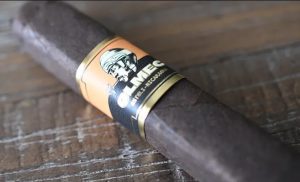
Maduro Cigars
Maduro (mature in Spanish) leaves are made using mature tobacco leaves which undergo natural fermentation which turns the leaves a rich mahogany brown. Maduro wrappers impart a deep, rich, nuanced flavor to a cigar. To use our wine analogy again, the Maduro is something like the red wine category. Maduros are like the Pinot Noirs, Merlots and Malbecs in cigar parlance. The dark Maduro wrapper leaves tend to have a nice oily sheen and a spectrum of flavor notes from cocoa to cabinet spices and pepper. The flavor profile is part of what makes them such a great match with amber colored liquors like cognac and whiskey. Our new Foundation Cigars Olmec Maduro is a fantastic example of the genre.
More Types of Cigar Wrappers
So, we got Natural and Maduro down. You didn’t think we were done yet, did you? Of course not. You’re aware there are way more wrapper variations beyond Natural and Maduro. In fact, there are at least 50 different kinds of cigar wrappers that originate from the four main wrapper leaf categories (Connecticut, Corojo, Habano and Maduro).
Yeah, it’s complicated and we’re definitely not going to cover them all here. Remember what makes a wrapper isn’t just the variety of leaf or where it comes from on the plant or how it is aged and fermented. It can be ANY or ALL of these things. It’s a lot. We are bound to leave some stones unturned—but this should give you a great primer on wrapper varieties that’ll more than get you started if you’re new and should fill in some blanks even if you’re an old head.
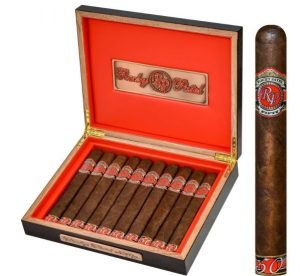
Oscuro Wrapper
Oscuro means ‘dark’ in Spanish. Oscuro’ isn’t a tobacco variety though. It’s a method of making leaves rich and dark. Even darker than the typical Maduro, an Oscuro wrapper will be almost black offer a rich, bold flavor. It’s the darkest a cigar gets, in fact. Connecticut Broadleaf, Nicaraguan Habano and Mexican San Andres are all popular choices for the Oscuro treatment. The Rocky Patel Fifty is a prime example of a Nicaragua-sources Oscuro wrapped cigar.
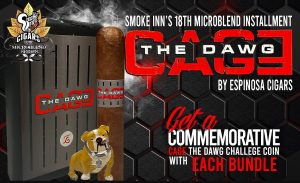
Habano Wrapper
It probably won’t surprise you that the Habano wrapper originates in Cuba. Today they most often come out of Nicaragua and Ecuador in particular. Habano wrappers also lean towards the darker end of the spectrum, featuring strong aroma and intense flavors. Espresso/coffee, leather and wood are flavor notes you’ll often hear mentioned when describing Habanos. Espinosa Cigars’ Cage the Dawg is a great example of a Habano wrapped cigar.
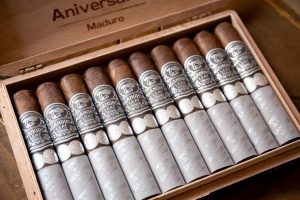
Corojo Wrapper
In the case of the Corojo wrapper, we are talking about a specific type of tobacco that originated out of the Vuelta Abajo region of Cuba. These days Corojo wrapper leaves most often come out of Honduras (Jamastran Valley, specifically) but they’re also grown in the United States in Kentucky. Corojo is a little darker than Connecticut and it’s associated with spicy flavors and pepperiness and zesty aroma. Corojo cigars also tend to burn slower. A good example would be the Aganorsa Leaf Aniversario Corojo.
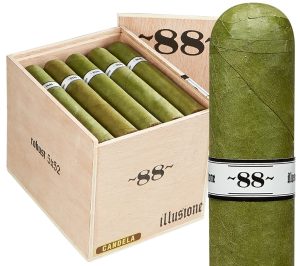
Candela Wrapper
The Candela wrapper is the opposite end of the spectrum from the Ocsuro. It’s similar in that it is the processing that makes it Candela, not the seed or variety. Where the Oscuro is the darkest, Candela wrappers are the lightest, just one slot below Claro. In fact Candela is sometimes called “Double Claro”. Candela cigars range from pale green to faint blonde in color. They are the mildest among wrappers, imparting a sweet, grassy flavor.
Candela wrappers are prepared using a special process using extra heat and lots of ventilation. The idea is to dry the tobacco quickly (but in a very controlled process) which effectively locks the chlorophyl into the leaf. This fire curing process takes the place of the usual weeks, months or years of fermentation performed with other wrapper leaves. Candela wrapper can’t be stored in a typical tobacco warehouse, it needs to be refrigerated. Looking to try a Candela wrapper cigar? Check out the Illusione Candela for a pure Candela experience.
We’re Not Done With Cigar Wrappers Yet
If you’ve made it here and you’re thinking, what the hell, they didn’t mention X,Y,Z! Relax. There was no way to cover all the wrappers in this first installment, so there’s a part 2 coming. We’re still not going to cover all 50 or so wrapper varieties of course, but there’s more to come, so keep it locked on Smoke Inn.
Smoke Inn is Your Cigar Shop
That should give any newer cigar smoker a solid baseline primer on wrappers. We’d like to think maybe the pros out there in the audience picked up a thing or two here as well. Like we said, there’s so much to know about wrappers that you can always learn more. We’re going to do a second part to this blog just to try and do some justice to the topic, so stay tuned for that! As always, if you’re local or happen to be visiting South Florida, be sure to reward yourself with a visit to one of the country’s best cigar shops in person. We’d love to see you.
Our South Florida Locations:
- Smoke Inn Palm Beach Gardens
- Smoke Inn West Palm Beach
- Smoke Inn Delray Beach
- Smoke Inn Boynton Beach
- Smoke Inn Pompano Beach
- Smoke Inn Tequesta
- Smoke Inn Port St. Lucie
- Smoke Inn Vero Beach
 Smoke Inn Blog Smoke Inn Cigar Talk
Smoke Inn Blog Smoke Inn Cigar Talk



